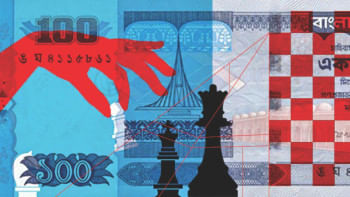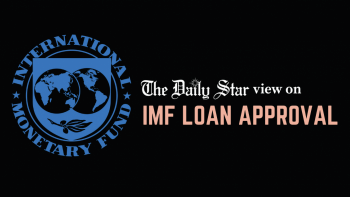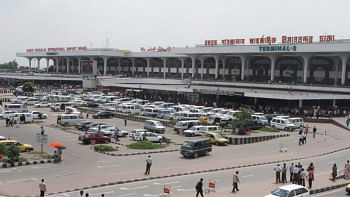Lessons from Pakistan’s economic crisis

Pakistan is facing a severe economic crisis. Essential fuel, food and raw materials cannot be imported due to its foreign exchange crisis. Thousands of factories have been closed down and millions of workers have been laid off. Inflation stood at 31.55 percent in February 2023 – the highest ever. Prices of staple foods like wheat and sugar have skyrocketed. Queues to get wheat at subsidised prices are getting longer. As of March 2023, Pakistan's central bank reserves stand at $4.32 billion, sufficient to cover just around one month of imports.
Pakistan is in such a crisis because its forex expenditure is higher than its earnings, and the country is increasingly dependent on foreign loans to cover this deficit. In the 2021-22 fiscal year, Pakistan's export earnings were $32.47 billion and import expenditure was $72.15 billion – i.e. trade deficit was $39.68 billion. In the same year, Pakistan borrowed $16.25 billion and spent $12.99 billion on debt servicing. Remittances in FY2021-22 were $31.27 billion, which were not enough to cover the trade deficit and debt repayments.
According to data provided by Topline Research, Pakistan's foreign debt doubled in seven years: from $65 billion in FY15 (24 percent of GDP) to $130 billion (40 percent of GDP) in FY22. Consequently, foreign debt repayment also increased – Pakistan's external debt repayment obligations are $73 billion in three years (FY23 to FY25). So, if Pakistan cannot restructure its debt and get new loans, it will go bankrupt.
According to Topline Research's analysis, there has been a significant change in the pattern and composition of credit along with debt growth. Bilateral and commercial borrowing increased more than multilateral borrowing. As these bilateral and commercial loans are of short duration and higher interest, the debt repayment pressure is increasing every year. As of FY21, Pakistan's external debt was $99 billion, of which 42 percent was multilateral, 38 percent bilateral, and the remaining 20 percent was commercial debt. Of the bilateral loans, the loan from China was $23 billion. Of the commercial debt, too, the largest exposure was to Chinese banks, amounting to $6.7 billion. In total, about 30 percent of foreign loans were taken from China, which was only 9.3 percent in 2013. Another form of commercial debt is high-interest debt through Eurobonds and Sukuk bonds, which have grown from just $1.6 billion in 2013 to $11 billion in 2022.
Most of the projects under the China-Pakistan Economic Corridor (CPEC) have a debt-to-equity ratio of around 80:20, or in some cases 75:25. And in most cases, the return on equity (ROE) is guaranteed at either 17 percent or 20 percent. The debt service terms are seven to eight percent with many of them pegged to six-month Libor (London Inter-Bank Offered Rate). According to an estimate published in the Dawn, against a $19 billion investment which has 80 percent debt component, the size of the outflow as debt service and ROE would be $3.546 billion per year.
Now, if the CPEC power plants cannot be utilised to increase export earnings, this annual outflow will create additional pressure on the forex reserves. This pressure is already evident from the fact that by September 2022, the Pakistan government owed at least 269 billion rupees to 12 Chinese IPPs. Pakistan agreed to pay 50 billion rupees to four CPEC IPPs to save them from default.
Pakistan's economy was already burdened with huge capacity payments to the existing IPPs. With the commercial operation of the newly installed CPEC IPPs, this burden increased even more. Due to the reserve crisis, Pakistan cannot import enough coal to run the imported coal-based power plants in full capacity. It is estimated that the capacity payments will be $10 billion by 2023, and Chinese companies will receive about half of that for CPEC power projects.
Pakistan is in such a crisis because its forex expenditure is higher than its earnings, and the country is increasingly dependent on foreign loans to cover this deficit. In the 2021-22 fiscal year, Pakistan's export earnings were $32.47 billion and import expenditure was $72.15 billion – i.e. trade deficit was $39.68 billion. In the same year, Pakistan borrowed $16.25 billion and spent $12.99 billion on debt servicing. Remittances in FY2021-22 were $31.27 billion, which were not enough to cover the trade deficit and debt repayments.
Another reason for the growing debt burden is the increase in programme (i.e. non-project) loans. If the loan taken for any economic project can be used to increase the country's forex earning capacity, it does not become a burden. But if a loan is taken only to solve the balance of payment crisis, then it just adds to the debt burden. According to an estimate, from 1980 to 2014, the World Bank provided 163 loans to Pakistan totalling $20 billion, of which only 29 percent were project loans and 71 percent were programme loans. Currently, Pakistan takes about 85 percent of its total foreign loans under "non-project" loans. Consequently, it will never be able to pay back these loans without taking new loans.
While Pakistan's foreign debt was increasing, its export earning as a percentage of GDP was decreasing. According to the World Bank data, in 1992, export earnings were 17.3 percent of its GDP, which came down to just 9.1 percent in 2021.
At the same time, the pressure of debt servicing also increased, as a result of which an increasing part of export earnings was spent on debt servicing. In 2011, debt servicing as a percentage of exports was nine percent, which rose over 35 percent in 2021.
This is the circumstances under which Pakistan's economy has fallen in a vicious cycle of taking new loans to pay the old loans.
Another major reason for the forex crisis is the import dependency of Pakistan's power and energy sector. Its energy production consists of oil, natural gas and coal. However, insufficient investment in exploration and development activities has made the country heavily reliant on imports. Due to higher energy prices in the international market, the share of energy rose to a record high at 29 percent ($23.32 billion) in the overall imports worth $80 billion in FY22, compared to 20 percent ($11.38 billion) in the total imports of $56.38 billion in FY21.
Bangladesh, too, has a huge amount of trade deficit and import dependency in its power and energy sector. Also, Bangladesh's total external debt doubled in the last seven years – from $41.17 billion in FY16 to $95.23 billion in FY22. Exports are increasing, but not so much compared to the GDP growth. As a result, the share of export earnings in GDP is decreasing. According to the World Bank data, in 2012, export earnings were 20.2 percent of the GDP, which dropped to 10.7 percent in 2021.
Although Bangladesh's annual debt servicing as a percentage of export earnings was just 11.4 percent in 2021, there is a serious concern among economists about the future when debt servicing for some of the largest megaprojects will begin. Bangladesh's external debt repayment obligation will double in the next three years. Looking at the crises of Sri Lanka and Pakistan, if Bangladesh does not change its course from building debt-dependent megaprojects, reduce import dependency in the power and energy sector, and fails to utilise the already built projects to generate foreign currency earnings, the very projects that are currently contributing to our GDP growth will become a huge burden for the economy.
Kallol Mustafa is an engineer and writer who focuses on power, energy, environment and development economics.

 For all latest news, follow The Daily Star's Google News channel.
For all latest news, follow The Daily Star's Google News channel. 








Comments